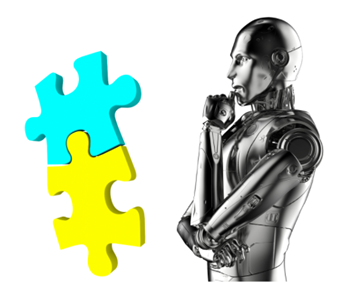
Swimage Monthly Newsletter
Frequently Asked Questions
In last month’s newsletter we answered frequently asked questions about recovery from malware, encryption, domain migrations, and provisioning new PCs.
This month, we are continuing the theme of frequently asked questions. We provide answers for questions about the following: recovery from ransomware, PC replacement, application matching,
and managing remote PCs with limited Internet.
Recovery from Ransomware

Q: How does Swimage + Tranxition Ransomware Recovery remove ransomware from a PC?
A: Swimage + Tranxition Ransomware Recovery provides deep data/profile backup and “point-in-time” recovery. It fully rebuilds systems (including OS, apps, settings, and data) from known-good sources in minutes while eliminating the ransomware/malware.
Q: How much labor is involved in the recovery?
A: Little-to-no labor is needed for ransomware/malware recovery. The system rebuild may be triggered in response to ransomware/malware detection. It may also be started by the PC user or an IT tech. Swimage automation ensures that a PC can be fully recovered with full functionality, including all apps, data, and settings, in a matter of minutes, versus hours, days, or weeks without Swimage.
The process can be run simultaneously on thousands of PCs in the organization, accelerating recovery in the event of a wide-spread event.
Q: Must Swimage + Tranxition Ransomware Recovery reside on a PC before a ransomware event?
A: Yes. Swimage + Tranxition Ransomware Recovery must be installed on a PC before a ransomware event. Think of it like an insurance policy for your PC .It provides business continuity in the event that all other safeguards have failed.
PC Replacement

Q: Does Swimage require all user data to be stored on the cloud?
A: No. Swimage detects the location of data storage and restores it to the same location, or it can migrate the data it to a different location, if desired. Data to be migrated can be stored in a variety of locations, including the local hard drive, Swimage snapshot, external USB drive, secure server share, cloud storage, or hybrid on-prem/cloud.
Swimage also takes a Snapshot of the drive before a migration. This can be used if any data is missed.
Q: Does Swimage require all user data to be stored on the cloud?
A: No. Swimage detects the location of data storage and restores it to the same location, or it can migrate the data it to a different location, if desired. Data to be migrated can be stored in a variety of locations, including the local hard drive, Swimage snapshot, external USB drive, secure server share, cloud storage, or hybrid on-prem/cloud.
Q: How does Swimage transfer data from the old PC?
A: Swimage uses a proprietary Direct Data Transfer process. All data and settings are migrated directly from the old PC to the new PC in record time by simply inputting a pairing code and
allowing Swimage to take care of the rest. The transfer may be run through the local network or
an ethernet cable.
The Swimage Encryption Handler ensures that data remains encrypted at all times. Full functionality is delivered back to the employee at first login, typically in minutes. When the employee first logs into the new PC, it is exactly like the old PC. All data is restored, all settings are preserved, and all desired applications are installed.
Q: Can Swimage be used for self-service PC replacements?
A: Yes! In fact, Swimage is perfect for self-service scenarios, including PC replacement. The
process is simple enough that the end-user can do it themselves, minimizing user downtime and
saving shipping costs (potentially hundreds of dollars per PC).
Q: Can we eliminate our build center for PCs if we use Swimage?
A: Yes. With Swimage, there is no need for techs to provision PCs at a build cente r .End users
can provision new PCs and transfer data from their old PCs through Swimag’se proprietary Direct
Data Transfer process, described above.
Application Installation

Q: How does Swimage determine which applications should be installed?
A: Swimage installs applications utilizing its proprietary intelligent application installation process, which utilizes any or all of the following methods: application matching, roles and templates, embedded images, drivers, and intelligent source retrieval.
Q: Which package types does Swimage support?
A: Swimage installs most supported package types and styles, including MSI, silent switches, batch files, SCCM packages, SCCM applications, and Appx packages . These work best when they are silent (not requiring user/tech input).
The Swimage Packaging Center of Excellence (PCOE) can transform a large number of unmanaged applications to well-managed applications very quickly and economically. The PCOE encompasses a team of application and automation experts to evaluate each application, apply corporate standards and determine the best approach to transform the application.
Q: In which order does Swimage install applications?
A: Swimage installs any number of applications all in the correct order, including dependencies, based on a dynamic ranking system.
Managing Remote PCs with Limited Internet

Q: What tasks may be completed through Swimage self-service?
A:
Swimage allows for tasks including reimaging, OS recovery, OS upgrades, malware recovery, PC replacement, and new PCs to be initiated through easy-to-use self-service functions. Swimage Attune makes the management of remote PCs easy and lowcost, without sacrificing quality of service.
Q: How does Swimage manage remote PCs with limited Internet?
A: The Swimage Attune agent resides on endpoint devices and is updated regularly. It may be run locally via self-service whenever needed, even if the Internet connection is currently limited. Swimage Attune can be utilized anywhere – from a home office, in the back of a cab, or even on an airplane.
To learn more about how Swimage can assist your organization with the above use cases, as well as many others, please visit www.Swimage.com or email Info@Swimage.com.


